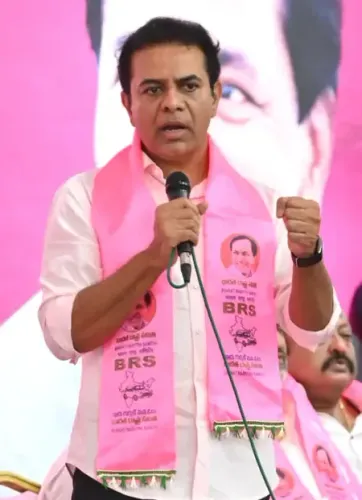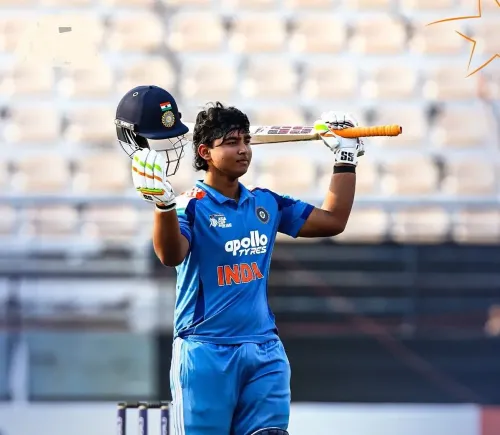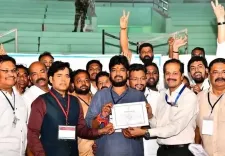How Did Shreyasi Singh Transition from Sports to Politics?

Synopsis
Key Takeaways
- Shreyasi Singh's journey from sports to politics exemplifies modern leadership.
- She has won multiple medals in shooting, highlighting her commitment to excellence.
- Her political career is focused on women empowerment and development.
- Shreyasi serves as a role model for women's participation in politics.
- Her influence reflects a blend of socio-political heritage and personal achievement.
New Delhi, Nov 14 (NationPress) In Bihar, where the government's efforts in empowering women have been widely discussed, one prominent figure has emerged. Shreyasi Singh, who has adeptly balanced the legacy of her political family with her accomplishments in sports, is making her mark as a Bharatiya Janata Party (BJP) legislator from Jamui.
The 34-year-old is the daughter of former Samata Party leader and Union Minister of State, Digvijay Singh. She is currently defending her seat in the Jamui Assembly, having secured victory in the 2020 elections by a remarkable margin of approximately 41,000 votes against her closest opponent, Vijay Prakash from the Rashtriya Janata Dal (RJD).
As of now, she is leading by more than 36,500 votes over her nearest rival, Mohammad Shamsad Alam of the RJD. Shreyasi first gained significant recognition not through her political endeavors but through her prowess in shooting. She has established herself as one of India's most skilled rifle shooters, competing on both national and international stages and earning medals in various multi-sport events, particularly in double trap shooting.
Among her achievements is a gold medal in women's double trap at the 2018 Commonwealth Games in Australia and a silver medal at the 2014 Commonwealth Games in Scotland. Both her father and grandfather, Kumar Serender Singh, have served as presidents of the National Rifle Association of India during their lifetimes.
In 2020, she joined the BJP, rapidly becoming a prominent public figure who merges her athletic accomplishments with local political aspirations.
Being born into a family with significant political influence in Bihar, Shreyasi was raised amidst both advantages and expectations associated with public life. Her father's prominence in local politics sparked her early interest in civic engagement. This political lineage not only provided her visibility but also a network of connections, which facilitated her journey toward establishing an independent identity.
Shreyasi's transition from the shooting range to the political landscape was a calculated move.
Her foray into electoral politics combines the appeal of a celebrated athlete with the organizational support of a major national party, alongside the local familiarity that comes from her established political lineage. This shift engages various aspects of Indian public life, capitalizing on the electorate's admiration for athletes, the credibility that comes with sporting medals, and the desire for new faces with recognizable backgrounds.
Her candidacy presented the BJP with a candidate who possesses broad appeal — a figure who can attract youth, women voters, and supporters of her father's political legacy. In her role as a legislator, Shreyasi has cultivated an image that reflects both her athletic training and her family's political heritage.
While campaigning in Jamui, she focused on familiar local political themes such as development, law and order, and welfare, emphasizing governance competence and accountability. Her electoral success hinges on her ability to navigate local caste and community dynamics, which play a crucial role in Bihar's political landscape, where her profile merges the stature of a political scion with the narrative of a contemporary professional.
As a relatively young woman in a predominantly male political environment, she exemplifies a new breed of politician — one whose biography includes professional accomplishments outside of politics and who can address issues such as sports development, youth outreach, and women's participation.
In Bihar, where investment in sporting infrastructure is below national averages, she serves as a visible role model for women's engagement in politics, leveraging her platform to advocate for policies that promote female education, employment, and civic participation.









